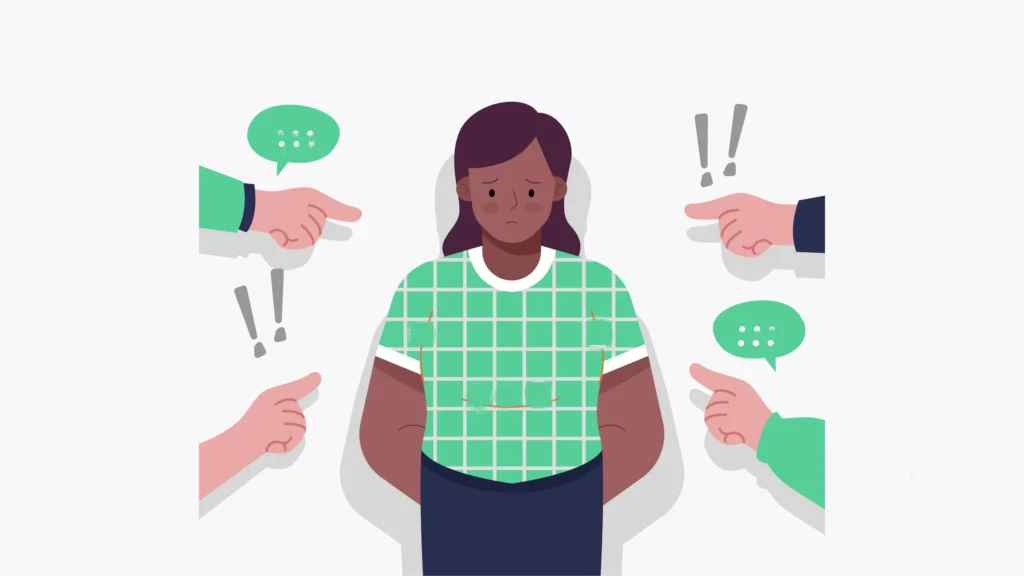Have you ever felt a pit in your stomach during a work conversation, unsure if something was truly offensive or just “awkward”? That sinking feeling might be a microaggression at work. These seemingly minor, often unintentional comments or actions can create a daily maze for marginalized employees, chipping away at their confidence and sense of belonging.
Microaggressions: Beyond the Obvious
Unlike blatant discrimination, microaggressions are the subtle jabs and everyday assumptions that communicate negative messages based on a person’s race, gender, ethnicity, sexual orientation, religion, or ability. They’re like the tiny cracks in a sidewalk – easy to trip over, but often overlooked.
Imagine being a woman constantly mistaken for an assistant or a person of color being told they “speak English so well.” These seemingly innocuous comments reinforce stereotypes and make people feel like outsiders.
The Cost of Tiny Cuts
While a single microaggression might seem insignificant, the cumulative effect can be devastating. It creates a hostile work environment, chipping away at a person’s self-esteem and impacting their productivity. Here’s how:
- Psychological Distress: Microaggressions can lead to anxiety, depression, and feelings of isolation.
- Reduced Engagement: Employees who experience microaggressions are less likely to speak up in meetings or take risks.
- Retention Issues: A culture of microaggressions can drive talented employees away, hindering diversity and innovation.
The Many Faces of Microaggressions
Microaggressions come in many disguises, some seemingly complimentary, others blatantly disrespectful. Let’s explore these categories:
- Micro assaults: These are intentional microaggressions, like telling a person with a disability they “don’t look disabled.”
- Microinvalidations: These dismiss someone’s experiences or feelings, like telling a Muslim colleague they “don’t seem religious.”
- Microinsults: These are subtle insults based on stereotypes, like telling a man in a creative field he must be “right-brained.”
Bystander Intervention: You’re Not Just an Observer
Microaggressions often happen in front of others. Here’s what you, as a witness, can do to break the cycle:
- Acknowledge: Let the target know you saw it and it wasn’t okay (privately).
- Educate: Gently explain to the perpetrator how their comment could be hurtful.
- Support: Offer to speak up on the target’s behalf if they’re uncomfortable.
Building a More Inclusive Maze: Strategies for Change
Creating a truly inclusive work environment requires a proactive approach. Here are some steps your company can take:
- Leadership Commitment: Leaders need to set the tone by openly condemning microaggressions and championing diversity.
- Training and Awareness: Educate employees on what microaggressions are and their impact through interactive workshops and simulations.
- Open Communication: Encourage employees to report microaggressions and have a clear and safe reporting system in place.
- Focus on Respect: Foster a culture of respect for all employees, regardless of background, through team-building activities and celebrating diverse perspectives.
Beyond Words: Actions Speak Louder
Combating microaggressions goes beyond simply having conversations. Here are some actionable steps to create a more inclusive maze:
- Diversity and Inclusion Initiatives: Promote programs that celebrate differences and create a sense of belonging, like mentorship programs connecting senior and junior employees from underrepresented groups.
- Employee Resource Groups (ERGs): Support groups for employees from similar backgrounds can provide a safe space for dialogue and support.
- Regular Review of Policies and Practices: Ensure your policies are free from bias and promote equitable treatment for all employees, from the hiring process to promotions.
Remember: Eradicating microaggressions takes time and continuous effort. By fostering open communication, building a culture of respect, and taking concrete actions, you can transform your workplace into a maze of opportunity, where everyone feels valued, safe, and empowered to navigate their path to success.
Bonus: Microaggression Role-Playing Challenge!
Divide your team into small groups and assign them real-world microaggression scenarios. Let them role-play how to address the situation from the perspective of the target, the bystander, and the perpetrator. This interactive activity can spark important conversations and equip employees with the tools to navigate the microaggression maze. By making microaggressions a topic of conversation and equipping everyone with the tools to recognize and address them, we can create a more inclusive and positive work environment for all.

